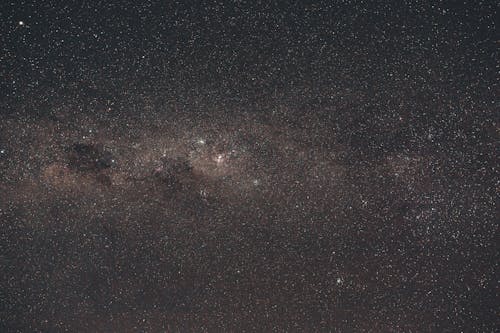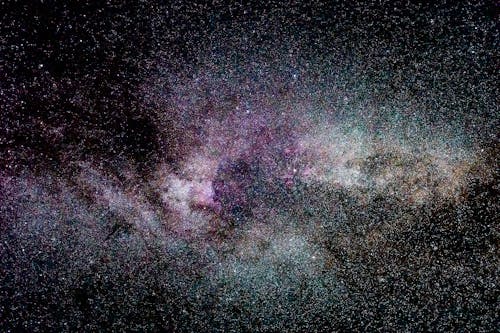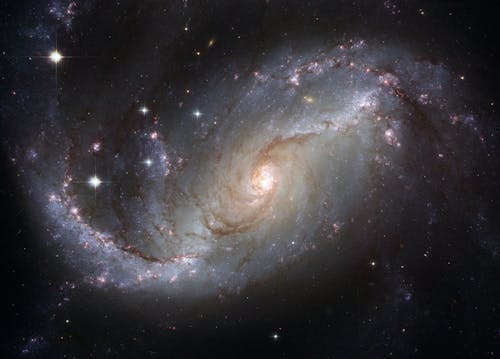This article raises many questions about current views on non-localism, symmetry, quantum mechanics, gravity, and the acceleration of the universe, including the possibility that para-classical explanations may not be necessary in describing the laws of nature.
With little insight into the mathematical operations that underlie current interpretations of classical and quantum physical laws, this author (reading several books on the subject) has become more confused than informed yet. Part of the reason has to do with the writing style of author-physicists who, admirably, want to popularize complex subjects. While some people cling to concrete ideas and definitions, others miss out into abstraction without any spatial, geometric or experiential basis, i.e. concepts that do not coincide with the world in which we live; For example the existence of multi-verses, time travel, and additional dimensions. Often unable to bring their interpretation to Earth, they rely on cart-first-horse mathematical models to create reverse resolution.
While this method is reasonable, this speculation generally proceeds well in areas that can never be confirmed or refuted. Sometimes it seems in their zeal to uncover the theory of everything, these thinkers come up with so much "everything" that nothing should be left out. In this opinion, science should achieve at least laxity with common sense. In that context, the current theory and nature of our world in a series of objects is discussed in concrete terms.
On gravity ...
The confusion in search for a theory of quantum gravity is feverish in scientific circles. Confusion results from the fact that large-scale gravity is valid with respect to the effect of one body on another (whereby more massive bodies draw less mass through the inverse square law depending on the distance between the respective mass and distance Will do. Two). However, this only applies to objects with a mass equal to or greater than one atom. The sub-atomic (quantum) world functions differently, especially regarding mass particles, which seem to be independent of themselves, independent of the surrounding material, and in a way so that their position and motion are sequentially tracked. It becomes impossible to do.
This conflict at face value is begging for resolution, which is why physicists have demanded a theory of gravity that includes both general relativity and particle (quantum) physics. But is this confusion justified?
Do we need a theory of quantum gravity?
One might ask: If gravity is a function of mass and particles such as photons and electrons have no mass, then why should they behave as a gravitational relation? How can something that "weights" attract something and something? In addition, "mass" refers to the congestion of particles or atoms within the body; Uranium, for example, has a higher density than atoms with a higher density such as a liquid in water. As the density of a body decreases (less than a single particle such as a quark at some point) its mass will decrease. There can be no congestion with only one particle unless the particle has internal components that congeal. Nevertheless, (assuming that there exists a basic form of matter that cannot be broken down further) there will be a point where gravity cannot be caused by zero mass. In other words, gravity is ultimately a spatial, mathematical combination that cannot exist without at least two components pressuring each other. As an aside, this is something to consider when discussing the mass of any eccentricity. More specifically, once anything is assigned to anybody, its information/communication content can reach the point where its underlying redundancy adds up to zero deposition and zero mass, ending in a singularity. Despite the "crunching" of diverse elements occurring?
In that context one might argue that Einstein's model of gravity is sufficient; The discovery of quantum / classical adds unnecessarily.
Beyond this, since both gravity and massless particles travel at the speed of light, will not the gravity effect on the particle be canceled as a result of relativity? For example, if you travel 100 mph on a highway and a 100 mph wind is in front of you, your car will stop - all things will be the same, and neither will demonstrate speed or regression. along the same lines; Gravity requires differences in mass, acceleration, etc. (something that is discussed below in the term of information theory).
Furthermore, celestial bodies do not follow only gravitational relations. All are hurtling through space at great speed. As a result it is not only gravity that is affecting their movements, but also speed, centrifugal and centrifugal force, inertia, or "drafting" (when a cyclist cuts down on friction by reducing wind factors directly behind a competitor ) And action / reaction theory as indicated in Newton's Third Law of Motion - the latter assumes that as the body moves, it occurs in an environment in which there is no substance (all of space is not a vacuum ), Which leads to a counter-reaction. opposite direction. Possibly any and all of these forces are affecting the planets and the galactic movement. Is it possible that the acceleration of the universe as well as Dark Matter can be explained as some of the juices of all these effects, with the same explanation such as superstring theory, bron theory or hologram theory?
Eight Gedenke ...
An interesting thought experiment would be to imagine the effect of gravity if all bodies, irrespective of mass and distance, were completely passive: that is, for any motion, rotation or centripetal, centrifugal forces, drafting, or action-reaction mechanics. There was no sensitivity. Probably gravity cannot exist in such a situation because any kind of gravity-induced attraction / collapse in a dormant universe would enter a change in momentum, i.e. movement. Thus, if the lack of momentum is canceled by gravity, one might assume that speed is the most necessary correlative, or even the cause of gravity.
Non-locality ...
At face value there is the assumption that particles have no legitimate place or momentum and can only function lawfully when observation seems either bizarre or tantric based on any viewpoint. One explanation for this phenomenon (human theory) holds that the observer is connected to the physical world, thus may never actually be an observer. In other words he is as dependent as a variable as the particle is observed; It is as if only God can really be an observer. Other explanations refer to the particle being virtual, darting into reality or parallel universes, thus beyond the whirling physical laws of our universe. Both explanations raise the question that, even if the observer changes the behavior of the particle, both will not be subject to physical laws.
This point is made more clearly. Witten, for example, assumed that the act of observing excited particles because the observer could only be sighted by the firing of photons on particles (Zimmerman-Jones, Robbins 2014) —leaves the observer in roughly the same position when an apple Barks for Others, for example, Bohr argued against the idea, stating that the precarious nature of particle behavior is constructed in particle and nature itself; Mysteriously mysterious, again, maybe not.
Mind and talk ...
One way to address this issue is to discuss the layout of the human brain. Early Russian research, beginning with Pavlov, led to the existence of one brainstem known as another signal system. He demonstrated that the double-hemispheric adornment of the cerebral cortex leads us to classify experience in two ways: a spatial/material and an associative i.e. symbolic/linguistic (Windholz 1990). Earlier encodings - like card catalogs - not only enhance our communication capabilities but also increase our memory storage. For example, we don't have to commit all objects in the sequence to visual memory ... 'apple', 'orange', 'pear', etc. because we can label each one "fruit" and give them access to all of them. By cross-reference. As a trait, but perhaps diverging, it appears that by conceptual symbolic thought our brains are able to override the quantum (person, piece by piece) of nature favored by quantum physicists through nifty, integrative mental mechanisms.
Yet when this nervous system provides an epidural and communication benefit it can also lead to over-gradation of experience. This is why Eskimos labels a dozen types of ice when in fact the composition of ice is always the same.
If, because of that neuropsychological mandate, we cannot conceive of a dual-signal system then we cannot imagine a joint-class phenomenon like quantum mechanics. The human penchant for apparent drift forces us to attribute the uncertainty of particle behavior to something. This "something" may have less to do with reality than the evolution of the human brain (which, all designed to survive, does not seem to be).
In that context, one might ask if we also need labels to describe non-localities. Probably not such (material) "thing" as photons. Its apparent ability to function as a wave or particle can actually derive more from our cognitive disorders than the nature of photons.
Our brains are finite and until we cannot make sound, experimentally validating a theory (keeping in mind that neither an atom, electron or a photon has ever been seen) we can nature through a neuropsychological prism Will be looking at
Particle/wave duality ...
Another issue in physics is the apparent dual nature of reality - the more precise of matter. In various contexts a particle can behave like a discrete unit with circulated space and motion, yet at other times exhibit a wave property (which modifies its position features as it potentially extrudes and Appears to potentially scatter). This is an interesting feature that adds to the confusion in scientific circles. Once again, though this can be explained with omakase simplicity.
Consider the following hypothesis. A particle such as a photon or an electron does not decay. Nevertheless, it has been established that all systems undergo entropy (decay), unless they are repeated periodically by external power sources. Even with that, the entropy usually wins as time passes. This is because, among other things, those external sources are finite and they will close themselves. Thus, perhaps one can address some duality problem inherent in the non-entropic quality of the particle.
You can start by asking why a photon does not decay. One possibility is that the underlying source of entropy is time itself.
An example comes to mind. If a person can live to a certain age - 15 years, in 1967, and that year is extended forever, he will never be of age. In that case, an external power source would be unnecessary; The first is because he would not need it, the second because it would be impossible to "new" energy sources without spending time because a time-lapse would be required, even if to open his mouth, bite down and swallow. The new source of energy. Renewal, or per-entropy, refers to a decreasing energy restoration from a temporal sequence, in which event transitions and a time-lapse occurs. Without a time-lapse, there can be no entropy and there is no need or possibility to reactivate. In that context, it may be time that finally determines the entropy.
If a particle is traveling at the speed of light, it is neither moving nor backward in time. It not only "stagnates" in terms of its unsurpassed speed, but also as a chronological anchor point in the universe. Since it does not experience a lack of time, it can occur at one place at a time, then later in another. While the human measurement of "where" and "when" depends on the passage of time, massless particles do not recognize the passage of time. There is no such thing as time in the particle category of experience.
Similarly, with the passage of time, there can be no spatial transition. This means that what a particle is and everything that it is is temporal-spatial; Neither here nor there. It is of dual nature which is a simple expression of its para-chronological and para-spatial makeup. The theory implicated on his behavior closes, which satisfies the dual signaling system of the human brain, but cannot reflect the non-spatial, non-temporal realities of the sub-atomic world.
Classical / Quantum Dichotomy ...
It is understandable that physicists at times ventured beyond parsimony in an attempt to unify classical and quantum physics. Perhaps because simple answers are considered more complex because solutions are the only recourse. Yet our universe is indisputably organized and as such it must be integrated on some level. The elegant stability of its various features is evident. For example, the correct amount of the case overrides the opposing case to make existence (symmetry-breaking) possible. Another example is seen in the uniform distribution of matter and energy spread throughout the universe. Others can be seen in the Planck length, Newton's inverse square rule and the regulatory motion played on us by the light speed that is so functionally immobile that any possible difference in motion can result in double viewing. There is a corrective change in time-lapse (time dilation) to keep the object "C" constant in motion from various perspectives. All such mechanisms provide clear indications of the universe with a contention towards stability.
The widespread existence of the cosmic order suggests that there may be a concomitant and/or co-functional relationship between quantum and classical physics (an idea implied by David Bohm via the hidden variable theory of quantum mechanics (Riley, 2010) . Ultimately both classical (order-based) and quantum theories must agree, and perhaps depend on each other. Yet physicists continue to grapple with obvious inconsistencies, so it is worthwhile to discuss this issue further.
Information and the pre-material universe ...
One way to link classical and quantum physics is through a concept that simultaneously refutes and confirms both theories. It is found in an essential component of information theory. This is some preliminary discussion.
Many theoretical physicists have referred to "information" in their writings, particularly regarding the behavior of black holes (Barbon, 2009). Information in that context generally refers to matter and energy. For example, if an object is sucked into a black hole, that object will break, as seen in various Star Trek films. Yet since the law of conservation of energy assumes that the object's energy cannot be annihilated, it can only change its form because the information-energetic components of the object cannot disappear. In fact, all information content must be present in some form or the other. Stephen Hawking believed that radiation from the black hole would further radiate and not be fully absorbed, one reason being that surface fluctuation under the laws of energy conservation, which are characteristic of a quantum state, Is combined with. Information material - The substance that popup in and out of existence (virtual particles), had to exist and absorb the information content of that mass into a black hole. Simply put; You can get nothing from nothing, or nothing from nothing. The application of the term information applicable to matter and energy is useful but possibly incomplete.
An abstract universe ...
This author has discussed this topic in previous articles but this idea is worth repeating. Information bears parallels not only with mass and energy but also with existence in every sense of the word. While theoretical physics assumes that matter and energy are essentially all - thus the term "physics", a universal "something" that is not entirely physical.
Information theory holds that "something" can only come into existence by being removed from a prior state of monotony or uncertainty. The latter refers to a super mixture without any intrinsic distinction, whether in the form of mass or force. The amount of information corresponds to the amount of uncertainty that is reduced. For example, if we type the letter "Tele" ... and ask which word it refers to, the answers will vary (uncertainty will be higher). But if we add one letter at a time, every new letter (initially the letter "p" says that it will reduce the uncertainty by one bit. Now we have the letter sequence "telep". Still more than that there may be possibilities, so the uncertainty is still intact. As does the redundancy. If, however, we add the letter "h", then the letter o ... n ... e. The word "telephone" emerges (a Kind of grammatical "construction)". The maximum information at that point. Has been acquired, while the uncertainty has been reduced to zero. In a conforming process, it does not give the idea of anything different.
Each reduction in uncertainty within that model .. (ie each difference extracted from the redundancy item) creates a viable message ... a "something" that can apply not only to language but to any aspect of nature It is possible.
In the cosmic context, "nothing" would be the same with absolute/infinite redundancy. For example, there is no difference between a photon and an electron; between plasma and matter, there can be no existence between a fermion (a particle carrying matter) and a boson (a force-mediated particle); Neither to the human eye nor to any functional or communication properties.
From that process, perhaps the entire universe — its essence, its function, its communicative features — was produced, not in a big bang, but more functionally through information expansion in the process of what might be called cosmic resolution.
In some ways, this coincides with anthropological theory, but beyond it is a broader world system, which can be discussed through another experiment (sorry about redundancy).
Universal noise ...
Imagine a universe in which there is no difference between particles, forces, stars, planets, flora and fauna; Only an infinite mixture. In that case nothing could communicate with anything else. Transformation, adaptation, messaging, force and mass change, as well as symmetry-breaking, will all be impossible. This fruitless world will not only be in a permanent state of entropy. It would not be a "world" at all because only with a transition from a state of uncertainty to information could existence exist.
Proto-physical exploration ...
In this sense, a bridge between classical and quantum physics may be inherent in information dynamics. Without the uncertainty of the quantum world there can be no classical, valid world. In that sense, classical and quantum physics can be complementary rather than contradictory. In other words, just as one cannot obtain information without a prior condition of uncertainty, one cannot find a valid classical world without extracting it from the uncertain quantum world.
Room for descent ...
There are many problems with this argument (I told you that I was quite ignorant on this subject). One is that it describes the universe in abstraction rather than in physical terms. In this model, information theory replaces physics as the dominant frame of reference. Second, it surpasses both quantum and classical models by posting an 'etymological' theory of the universe, whereby one cannot find order without an initial state of clutter. This appears to contradict the specific order for the chaotic sequence to be pursued in thermodynamics. Another problem lies in the implication that nothing can arise from it, which is contrary to the principle of conservation of energy.
How to address such conundrums? It is not an easy task. Quantum mechanics has not only been verified by research but has also been employed very effectively technically. So are classical concepts - or else we cannot travel in outer space or use GPS systems in our cars. On the other hand, information theory is both technically and mathematically. The assumption that information is measured by a reduction in uncertainty is almost well established (Stover 2014).
Another possible problem is that this idea raises interesting questions about reality; Converting it into something more spiritual because origin and reason are considered pre-material. It is scientific that information lends itself to measurement through uncertainty reduction, but the final unified theory is not a field or theory of quantum gravity, but rather a non-material information-resolution process.
What about the beginning?
How can the concept of a pre-informed universe? One way is by drawing a parallel between two forms of energy - potential and kinetic. Potential energy corresponds to mass, but without any momentum or communication possibilities or any effect, without any momentum (which converts it to kinetic energy). Potential energy is a state of pre-existence in which there are no cause-effect manifestations. Like potential energy, the proto-universe can have implications, at least until the first bit of information (the first distinction) was extracted from the redundant state.
Once there is a gap and separates from the pack (electrons, photons, helium gas, etc.), something interesting happens. At that point not only the information content of the universe has increased, but through distinction, it became possible for the first start in communication. This is because only a signal can have a message with the ability to discriminate. Thus the newly distinct particle/gas units were able to influence each other at some point where none existed before in the possible universe. This in itself gives rise to more rapid signal distinctions. An information explosion would have unfolded in a plethora of celestial bodies (which could be classified similarly as cosmic bits). Eventually, the four main forces diverge functionally.
From information to order and complexity ...
As more spacing occurs, more bits of information are received. Atoms evolved as electrons, a nucleus, protons, etc. as part of information dissemination. The massive clouds of gas swirled until gravity pulled them together in a few different galaxies, entangled in still more detail (a decrease in uncertainty) in the universe.
The question is whether existence applicable to the origin and evolution of the universe can be seen as an evolving information system. If so, the quasi-unit must be described as between the physical and pre-physical world before construction. "Nothing" with vacuum, but "nothing" in the functional/communicative sense; Originally governed by a process involved in the dynamics of information, and eventually manifested through a resolution process, not unlike a cognitive search for discovery by those studying the universe.











